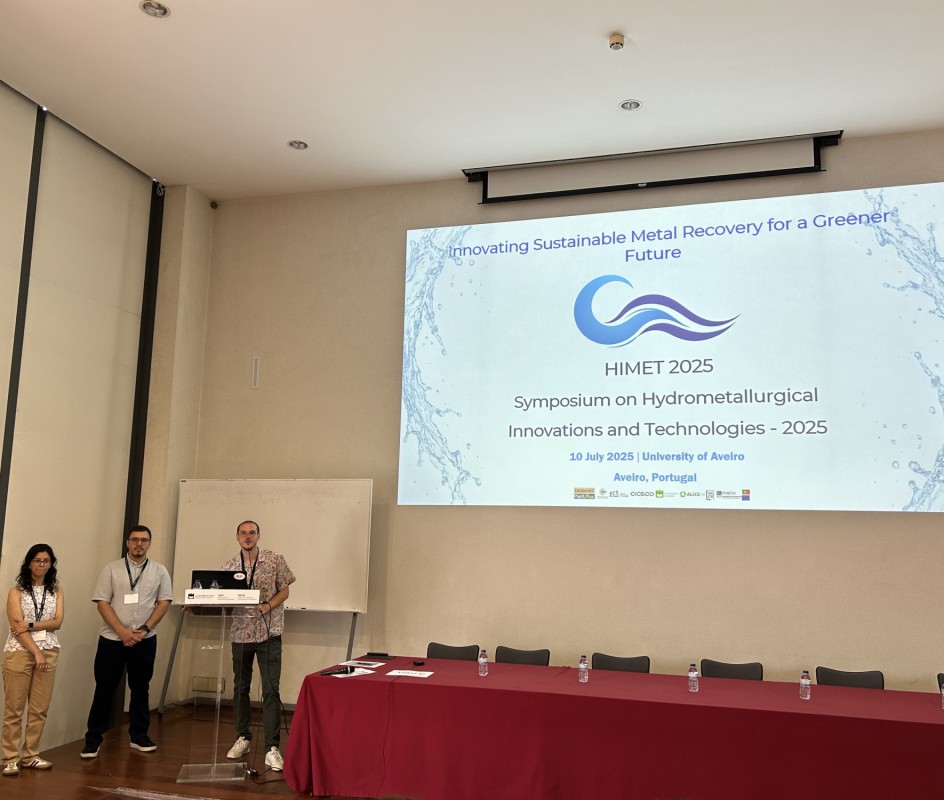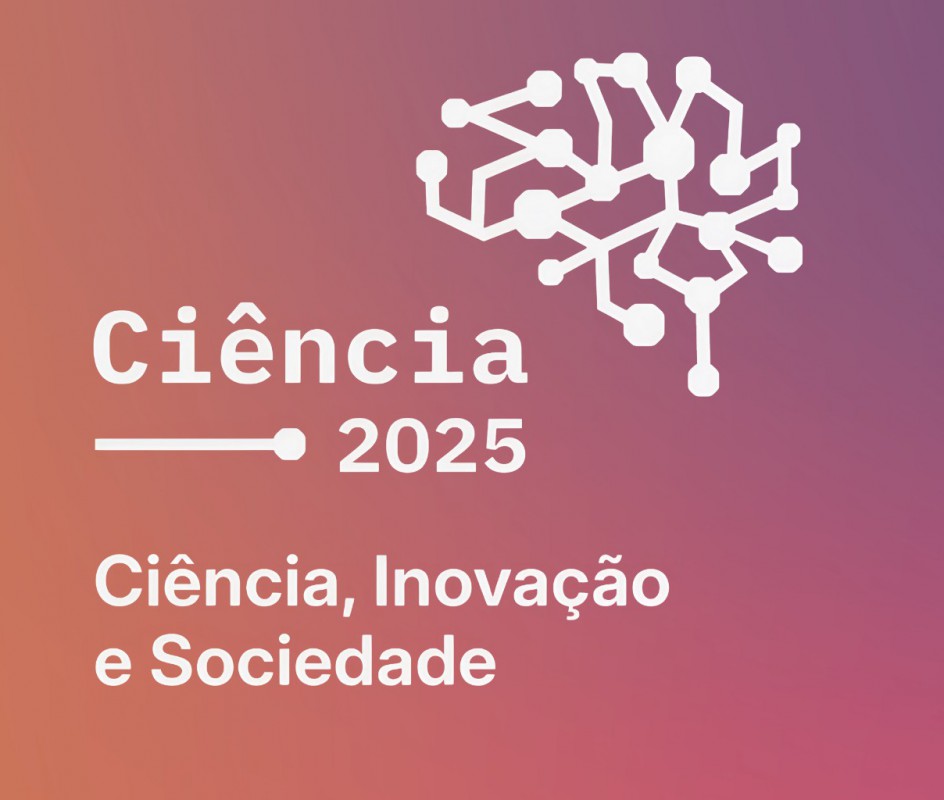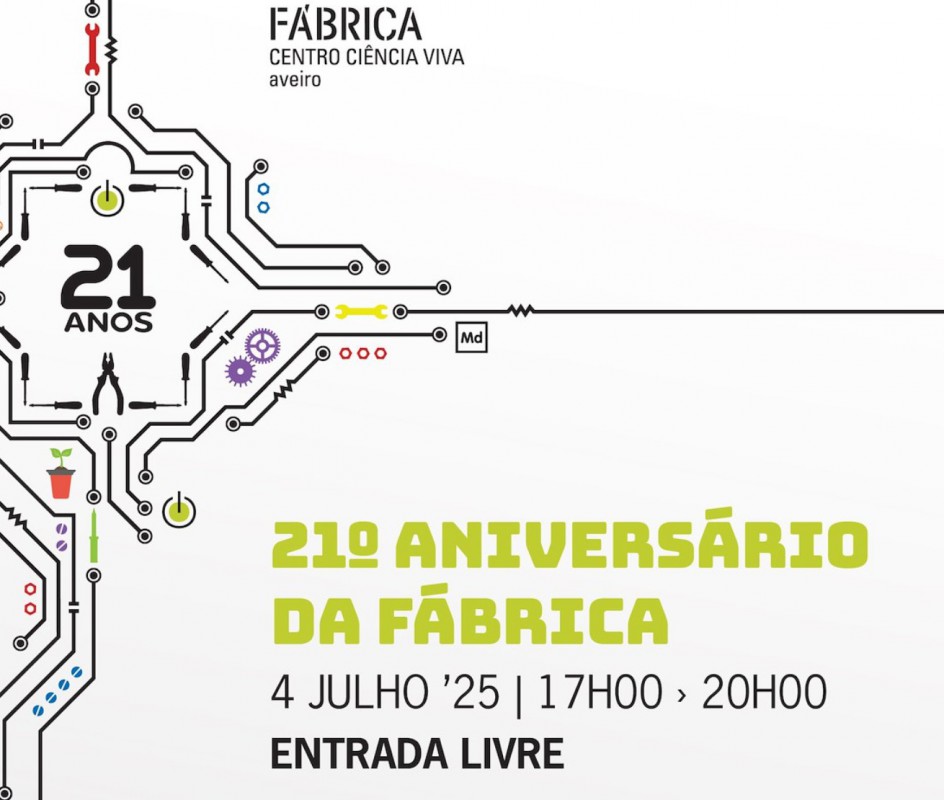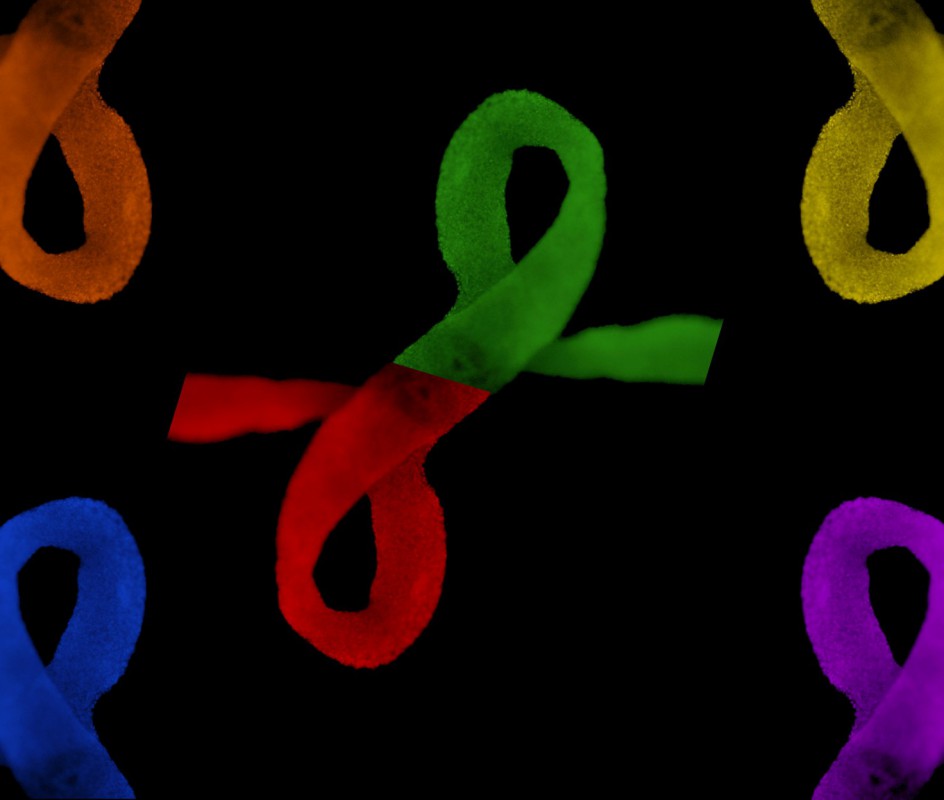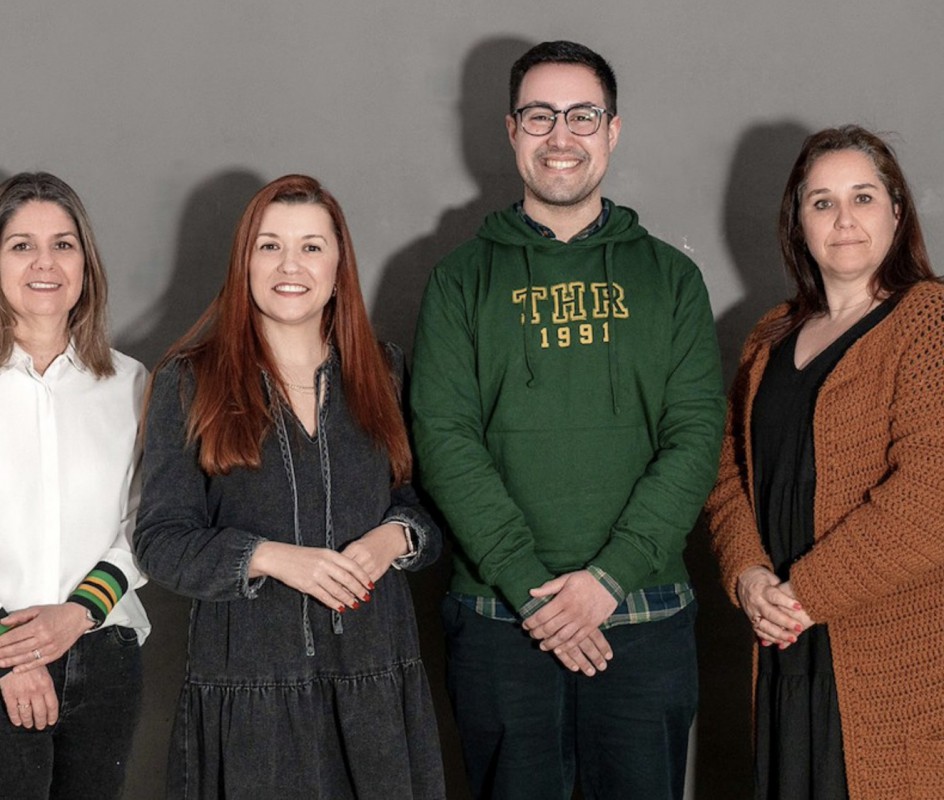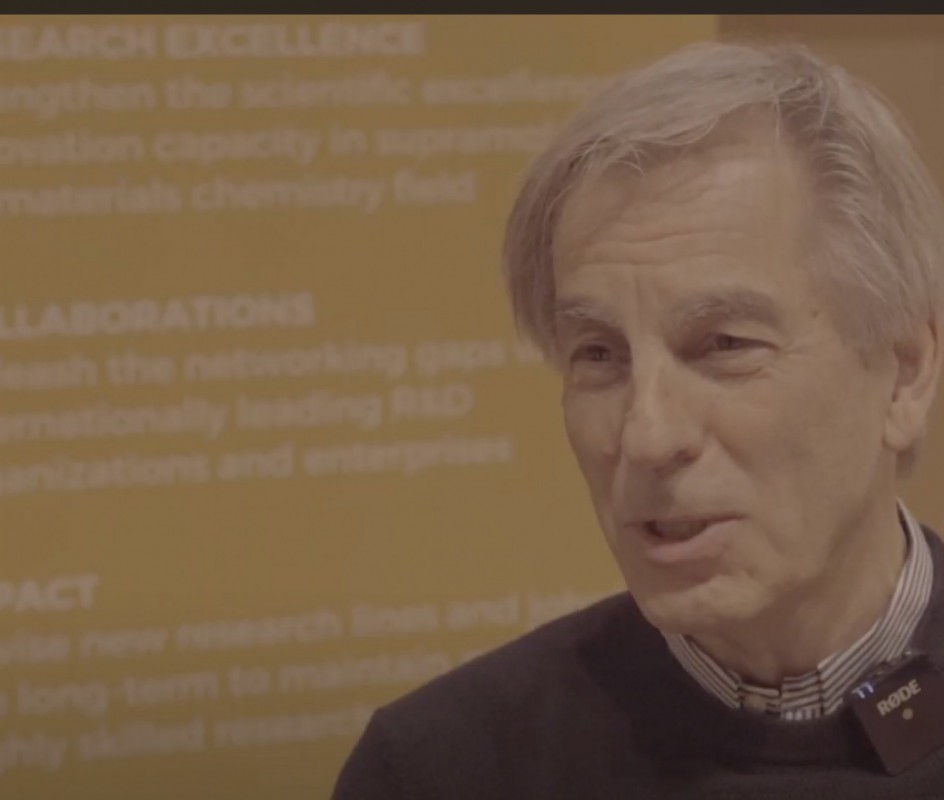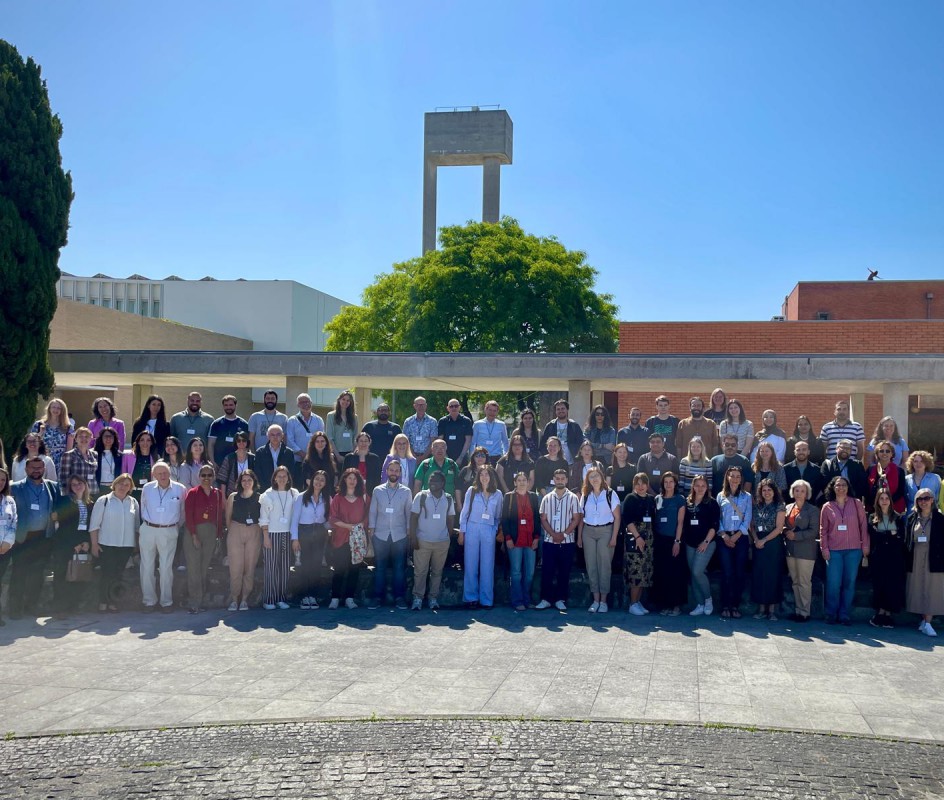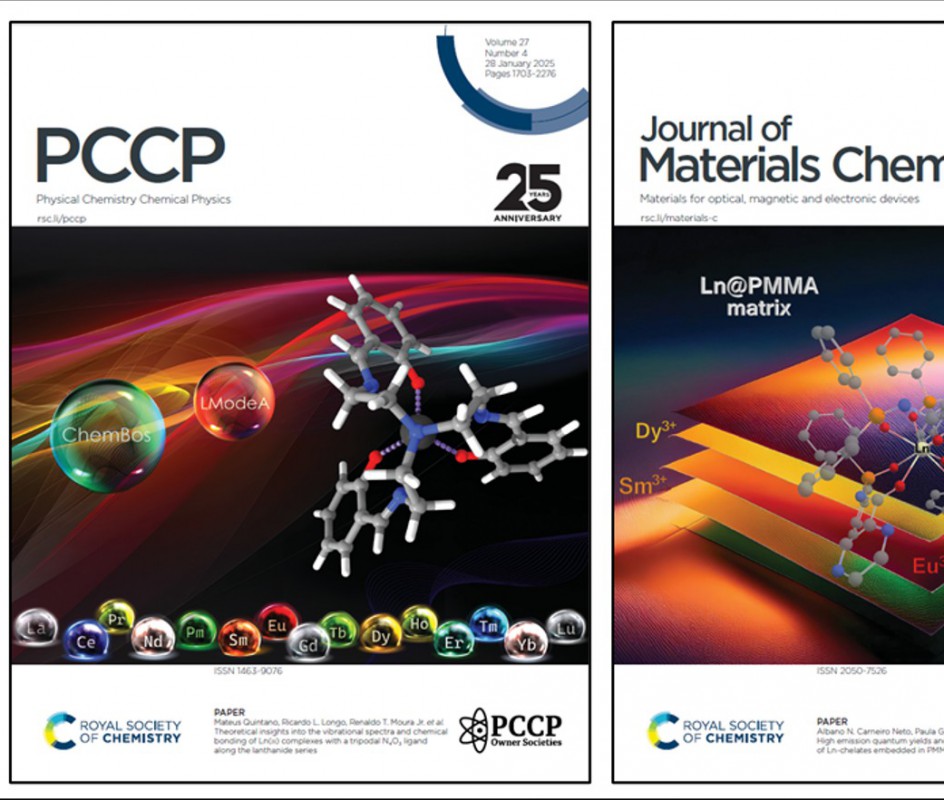
Two articles—recently published in prestigious journals of the Royal Society of Chemistry (RSC)—were highlighted on front covers and featured the active participation of researcher Dr. Albano Carneiro Neto (Department of Physics and CICECO).
The first cover was published in the fourth issue, on January 28, 2025, of Physical Chemistry Chemical Physics (PCCP, impact factor 2.9), and the second cover in the fifth issue of Journal of Materials Chemistry C (J. Mater. Chem. C, impact factor 5.7) on February 7, 2025.
These doubly honorable achievements reflect the relevance of the studies conducted and the quality of the research carried out at CICECO and its partner institutions.
RSC journals generally have three types of covers: Front Cover, Inside Front Cover, and Back Cover, with the Front Cover being the most prestigious, as it illustrates the main cover of the issue, which appears on the first page.
The cover selection process begins with an invitation from the journal's responsible Editor to the authors of newly accepted articles that have demonstrated high scientific relevance, based on the evaluation criteria of Reviewers and Specialist Editors in the field. Upon accepting the invitation, authors must produce and submit an illustration proposal to the Editorial team. The final decision is made by the Editorial Board, which may reject a cover proposal that does not meet aesthetic, ethical, or copyright criteria regarding third-party images—or their parts.
Receiving a cover distinction in Royal Society of Chemistry journals is a highly prestigious recognition.
Collaborations and Authorship
The first cover article was developed in collaboration with Professor Elfi Kraka from Southern Methodist University (Dallas, USA). Other partners from Brazil were led by Professor Renaldo Moura Jr. from the Federal University of Paraíba, a longtime collaborator of researcher Albano Neto.
The second article was also authored by Albano Neto, as the corresponding author, alongside Prof. Paula Gawryszewska from the University of Wroclaw (Poland) and other researchers from Ukraine and Brazil.
This achievement reinforces CICECO’s role as a center of excellence in research, particularly in advancing luminescent materials chemistry and lanthanide spectroscopy.
Scientific Advances in the Highlighted Articles
Machado, F. C.; Quintano, M.; Santos-Jr, C. V.; Carneiro Neto, A. N.; Kraka, E.; Longo, R. L.; Moura Jr., R. T.
Theoretical Insights into the Vibrational Spectra and Chemical Bonding of Ln(III) Complexes with a Tripodal N4O3 Ligand along the Lanthanide Series.
Phys. Chem. Chem. Phys. 2025, 27 (4), 1794–1803.
https://doi.org/10.1039/D4CP03677H
This study presented new theoretical insights into the vibrational spectra of complexes across the lanthanide ion (Ln³?) series using the local vibrational mode theory, enabling a more detailed decomposition of the structural contributions of the complexes.
Additionally, it established quantitative relationships between chemical bonding properties throughout the lanthanide series.
Lipa, A.; Pham, Y. H.; Carneiro Neto, A. N.; Trush, V. A.; Li, H.; Malta, O. L.; Amirkhanov, V. M.; Gawryszewska, P.
High Emission Quantum Yields and Color-Tunable Properties of Ln-Chelates Embedded in PMMA.
J. Mater. Chem. C 2025, 13 (5), 2142–2153.
https://doi.org/10.1039/D4TC03939D
This article focused on producing thin layers of poly(methyl methacrylate) (PMMA) containing Ln³? complexes with high quantum emission yields—i.e., the ratio of photons emitted to photons absorbed by the molecule—reaching high values of 85% for Eu³? and 66% for Tb³?.
The pure crystals of these compounds—before being embedded in PMMA—exhibited even higher quantum yields of 95% for Eu³? and 75% for Tb³?.
The study analyzed the influence of the polymeric medium on the photophysics of the complexes and proposed a theoretical model—developed by Albano Neto—to predict variations in quantum yields when complex crystals are embedded in a polymeric medium.
These results open new perspectives for the design of more efficient materials with applications in optoelectronic devices and luminescent sensors.
How the Covers Were Created
The cover artwork for the PCCP article (figure below on the left) was conceptualized in meetings among all the authors. These discussions aimed to represent the lanthanide ion series applied to chemical bonding models using computational tools.
A sketch was drawn, followed by a refined version of the cover, executed by a professional graphic designer.
Initially, the Editorial invitation was to prepare an illustration for the Back Cover. However, the final decision came as a pleasant surprise to the authors when they were informed that the illustration had been selected for the Front Cover of PCCP.
On the other hand, the cover of the J. Mater. Chem. C article was chosen from three versions developed by Albano Neto in discussions with Prof. Paula Gawryszewska (University of Wroclaw, Poland).
The artwork represents the PMMA polymeric layers containing high quantum yield emission compounds.
The molecular structure is highlighted in the center of the image. A lantern emitting light represents the excitation source of the Ln³? complexes in the polymer matrix. Each polymeric layer, in turn, emits light in different colors (yellow, orange, green, and red) depending on the type of Ln³? ions.
The illustrations were created using professional modeling and graphic design software, such as Blender and Adobe Illustrator, as well as more accessible tools like Microsoft PowerPoint.
Links
https://pubs.rsc.org/en/journals/journalissues/cp#!issueid=cp027004&type=current&issnprint=1463-9076
https://pubs.rsc.org/en/journals/journalissues/tc#!issueid=tc013005&type=current&issnprint=2050-7526
Related Articles
We use cookies for marketing activities and to offer you a better experience. By clicking “Accept Cookies” you agree with our cookie policy. Read about how we use cookies by clicking "Privacy and Cookie Policy".


